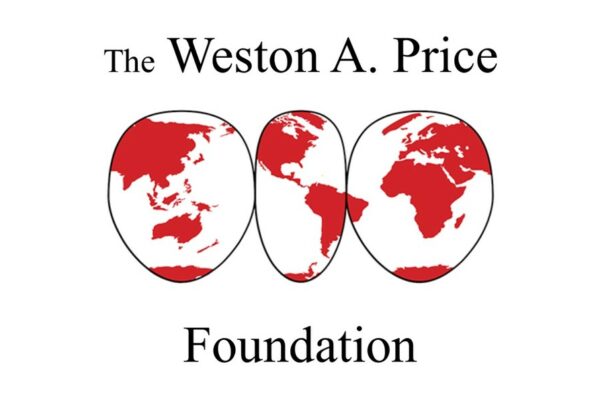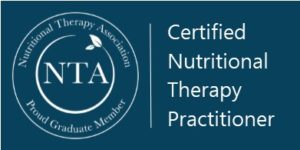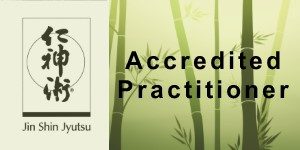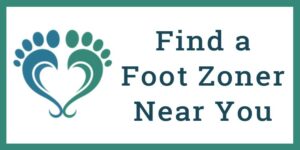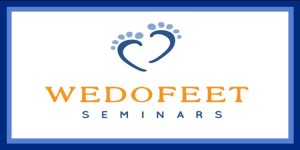This is Part 5 of a 6-Part guest post series on Emotional Anatomy by Steven Horne.
I first met Steven at the LDS Holistic Living Conference where he was teaching a class on herbal remedies. His class was completely full and after hearing him teach I understood why. I recently participated in a free preview of Steven’s Emotional Anatomy webinar and following the webinar contacted Steven to see if he would be willing to submit a guest post on the topic of Emotional Anatomy. I am grateful and humbled that he accepted.
Steven is offering the complete, seven-session Emotional Anatomy Webinar for only $127. The complete webinar goes into greater detail about the various types of emotional wounds and tools you can use to help people heal from them. On his Tree of Light Publishing website, you’ll also find a free preview class that explains the entire emotional map he uses and his technique for healing emotional wounds. I hope you enjoy the following Emotional Anatomy – The Mental World by Steven Horne.
 Having completed our discussion of the first two “worlds” of our being, the physical and emotional world, it’s time to discuss the world of our mind. This uppermost world of our being is the realm of thought, intelligence and perception. The four energy centers of this world are as follows:
Having completed our discussion of the first two “worlds” of our being, the physical and emotional world, it’s time to discuss the world of our mind. This uppermost world of our being is the realm of thought, intelligence and perception. The four energy centers of this world are as follows:
3. Left Brain Energy – located over the left temple
2. Right Brain Energy – located over the right temple
1. Third Eye Energy – located in the middle of the forehead
0. Crown Energy – located on the top of the head
The location of each of these four energy centers is depicted in the diagram. Again, a weakness in the energy in any of these areas will be related to unresolved “wounds” in that part of our being. The wounds in this area are less emotionally-centered and more belief centered. They interfere with our ability to perceive, understand, reason and create. Here’s an explanation of each energy center, what it means, and some tools you can do to promote healing in that center.
Left Brain Energy
The left brain controls the right side of the body, which links it with the other “right side” energy centers we’ve already covered, the liver and thymus. All of these energy centers deal with the ability to create separation. The liver allows us to have anger and fight to defend ourselves from harm. The thymus gives us judgment, which allows us to separate ourselves from what isn’t good for us emotionally and socially.
The left brain follows this same pattern of energy. It is the logical side of the mind, which allows us to classify things, label them and compartmentalize them. This is the side of the brain that allows us to see the trees, the parts and pieces. This is also the side of the brain that allows us to separate what makes sense from what doesn’t make sense. In other words, it allows us to reject ideas.
Weakness on this side of the mind is uncommon in our culture because, generally speaking, we over train the left brain in our culture. It is the side of the brain that deals with language, mathematics and science, all of which are highly emphasized in our educational system. This makes us overly skeptical and reduces our creativity, imagination and our openness to new ideas.
Nevertheless, some people do have a weakness in the left brain energy. Obviously this makes subjects like math and science more difficult for them, but it also reduces their ability to exercise sound judgment and reason. These people are often kind of “airhead” in their approach to life. They accept all kinds of “airy-fairy” ungrounded, impractical ideas and have a hard time being reasonable or sensible. These wounds are usually the result of difficulty mastering “left-brain” subjects in school, such as math, grammar and science.
Useful flower essences for this type of person include clematis, which helps people who are daydreamers and visionaries, but are impractical and unable to manifest their ideas in the real world. Blackberry is another flower essence for these people because it helps people who have big goals and ideas but are unable to take action on them. Other essences that may be helpful include canyon dudleya, rabbit brush and tansy.
Right Brain
The right brain is the intellectual equivalent of the pancreatic and heart energy. It is the ability to see likeness and similarity, rather than difference and compartmentalization. In other words, the right brain draws things together and helps us see the whole. The left brain helps us “take things apart,” but the right brain helps us “put them back together.”
This ability to see how two apparently unrelated things are similar is the essence of metaphor and simile in poetry. When the poet says, “My love is like the red, red rose,” there is nothing logical about that statement. A woman does not look like a rose or have anything physically in common with the rose. What the woman has in common with the rose is an abstract quality we call beauty.
These abstract qualities, like love, peace, harmony, friendship and hope are spiritual concepts. We cannot physically measure or define them. We see them in the relationship between physical things. One reason why many people have a difficult time understanding spiritual things is that they are too physically-minded or left-brained. Without training the right-brain, which is the spiritual mind, it is difficult to grasp these intangible ideas.
Poetry, story-telling, dance, music, painting, sculpting and even sports help to train this side of our brain. Religion and philosophy also help develop this side of the mind. Unfortunately, these right-brain subjects have fallen into disfavor in our public school system, which gives people a lop-sided understanding of the world. Engaging in any of these activities can help to correct this imbalance, and oddly enough, actually helps people be better with left-brain subjects as well.
Besides engaging in artistic activities and studying philosophy and spirituality, the right brain can be enhanced by using flower essences like Indian paintbrush, blue flag and shasta daisy. Indian paintbrush helps regenerate creative energy, blue flag promotes inspiration and creativity and shasta daisy helps people who are overly left-brain or intellectual to see the whole and not just the pieces.
Third Eye Energy
The third eye is the aspect of our mind that transcends both the right and left-brain consciousness. It is able to see the part and the whole at the same time. In other words, it is able to see the “oneness” of all things. It is the seat of consciousness and awareness.
A person with a well-developed third-eye energy is a see-er, or in other words a “seer.” The seer is about to see truth that other people are blind to .
It is interesting that the scripture doesn’t say, “let your eyes (plural) be single to the glory of God,” but rather, “let your eye (singular) be single.” This suggests that the “eye” being spoken of is the third-eye, the eye of consciousness. Having a single eye is having our consciousness focused on a singular objective. I believe that having an “eye” single to the glory of God is the same as having the “Father’s name” written on your forehead or “always remembering” God.
I don’t believe that the “mark of the beast” talked about in the book of Revelations is a physical “mark” in the forehead, anymore than having the Father’s name in the forehead means tattooing God’s name on your forehead. It is talking about the condition of this third-eye. Do we serve God or Mammon? Where is our consciousness focused?
When this center is closed down, I have found one of two issues is present. First, the person is in denial about something or second, they are trying to block or shut down their spiritual gifts. The former involves issues like knowing that their spouse is having an affair or that an employee is embezzling from them, but not wanting to admit it. They are in effect, shutting their eyes (or awareness) to the truth. In the later case, the person is afraid of their spiritual gifts, often because people have mocked them about it, so they want to deny what God has given them.
Meditation or pondering develops the third eye energy. Flower essences that are helpful here include madia, mullein, peppermint and sage. Madia is for people who are easily distracted and unable to concentrate or focus. Mullein helps one be true to the voice of one’s own conscience. Peppermint overcomes mental lethargy or sluggishness and sage is for those who cannot see the meaning, purpose or wisdom in their life lessons.
Crown Energy
Our final energy center sits opposite the root energy. The root energy connects us to the physical world, while the crown energy connects us to the spiritual world. This energy center is rarely weak, but when it is, it must be corrected before any other emotional work can be done, because the person is literally not fully present, meaning their spirit or soul isn’t fully inhabiting their body. This means that the person is quite literally “beside themselves” or “out of it” or “spaced out.”
This is usually due to extreme trauma which has caused them to withdraw from physical life, but it can also happen from birthing trauma, which causes a person to not fully incarnate into this life. If the person is dissociated enough, this can actually lead to other spirits sharing their body with them, which is what is usually happening in multiple personality disorder.
For instance, I worked with one woman who would get up in the night (sleepwalking) and destroy things in her home, waking up the next morning with no memory of what happened. In another instance I worked with a boy who had never fully incarnated into this world. He was so dysfunctional that he could not attend any school, public or private.
Native Americans talk about a concept called “soul retrieval,” referring to helping call a person back to their own body. I’ve seen this happen. In both of the cases I referred to earlier, the problems stopped when the person took possession of their own body back. It’s impossible for me to describe how this is done in this blog, but be assured it can be done.
There are several flower essences that can help. Shooting star is the one I use the most. It helps a person come into their body. Another good flower essence is Manzanita, which helps those who are estranged from earthly life and actually have an aversion to it, to accept this physical existence. The person who needs Manzanita is literally half-dead and half-alive. Angel’s trumpet and milkweed are two other flower essences to consider in these cases.
Be sure to join me next week for the final installment of Emotional Anatomy.
Steven Horne is professional member and recent past president of the American Herbalists Guild (AHG) and a professional member of the International Iridology Practitioner’s Association (IIPA). He has also served on the board of directors of both organizations. An herbalist, natural health teacher, author, and consultant, he is a popular speaker and students find what he teaches is practical and easy to understand and apply. Steven is the author of numerous books and course on natural healing. He has been a consultant and product formulator for several herb companies and the founder Tree of Light Publishing, an educational organization dedicated to helping people to heal themselves on all levels. Recently he started the School of Modern Herbal Medicine, which is dedicated to “excellence in herbal education.” He also offers personal health consultations through ABC Herbs in St. George, UT.
Other articles in this series include:
- Emotional Anatomy – Introduction
- Emotional Anatomy – Overview
- Emotional Anatomy – The Physical World
- Emotional Anatomy – The Heart World
- Emotional Anatomy – Conclusion

